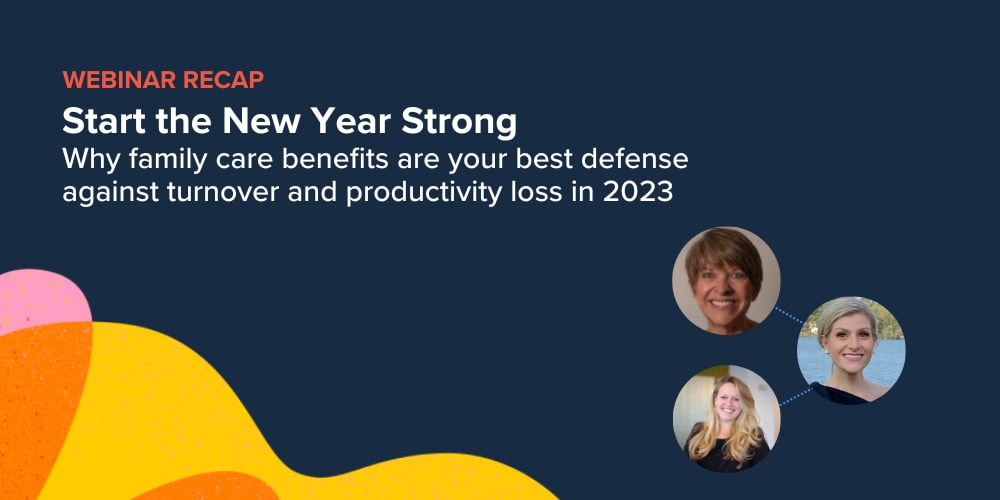In the ever-evolving landscape of Human Resources, the role of HR leaders has become increasingly dynamic, shaped by diverse industries, corporate cultures, and unique leadership styles.
Our recent session at the North American HR Executive Summit (NAHRES), titled “Which HR Leader are you? Exploring HR Personas and Their Approach to Evolving Workforce and Benefit Priorities in 2024,” delved deep into the intricacies of HR archetypes and their strategies for navigating the complex landscape of workforce priorities and benefits.
Led by Wes Burke, the Chief Human Resources Officer at Care.com, this session explored the distinct personas within the HR leadership world, shedding light on their top priorities for 2024.
Let’s explore some common HR archetypes:
- Compliance Czar – You will typically see this archetype lean toward heavily regulated sectors, like: finance & banking, healthcare, pharmaceuticals, energy, and government & public services. They play a vital role in risk management, policy development, and strategic planning to ensure that the organization operates within the boundaries of applicable laws and regulations.
- Culture Champion – The culture champion is often found thriving in the tech sector (startups), at customer service companies, in creative industries, or in health and wellness – often where there is a well known company brand. Defining cultural values and aligning with business strategies is their bread and butter. They typically spend their energy on employee engagement (feedback, recognition programs), talent acquisition (making sure employees are the right cultural fit and developing first class onboarding programs to immerse new hires in the org’s values and cultural norms), leadership development, and communication strategies and storytelling.
- Operational Expert – Operational experts can put their powers to good use in industries like manufacturing, logistics and supply chain, IT services, and telecommunications. Their main goal is to enhance the efficiency of HR and people functions, align HR strategies with business goals, and contribute to the overall operational success of their organization. Their day to day priorities focus on strategic planning, process optimization, data & analytics, implementation of new technology, workforce & succession planning, and resource allocation and budgeting.
In reality, most HR leaders blend the different elements of these personal styles and archetypes to create a comprehensive and balanced approach to their benefit strategy, often leaning heavily into one or the other. but their industry, corporate culture, and leadership style can influence the way they approach workforce priorities.
- A Compliance Czar will look at a benefit’s impact on compliance, they will work to mitigate risks associated with benefits to ensure they meet regulations and avoid penalties, and they will always work to stay informed of legislative changes and ensure their workforce remains informed. Because they tend to work in highly regulated industries with tighter margins, their top priorities will likely be resiliency planning in the new year.
- The Healthcare industry is a prime example of a sector priming for resiliency planning. It is vital to ensure healthcare employees have a full suite of options to help keep them employed. This is an industry where few members of the workforce are able to complete their duties in a remote environment. One of the major drivers of stress at home is providing care for your loved ones, offering benefit options like Backup Care will help to create a reliable workforce. See how Sharp HealthCare saved 4,500 days of missed work in the first 6 months of implementing Backup Care.
- The Healthcare industry is a prime example of a sector priming for resiliency planning. It is vital to ensure healthcare employees have a full suite of options to help keep them employed. This is an industry where few members of the workforce are able to complete their duties in a remote environment. One of the major drivers of stress at home is providing care for your loved ones, offering benefit options like Backup Care will help to create a reliable workforce. See how Sharp HealthCare saved 4,500 days of missed work in the first 6 months of implementing Backup Care.
- The Culture Champions will want to make sure their benefit strategy aligns with their company’s cultural values. They will work to engage employees through their benefits to boost satisfaction in the workplace, and they will communicate benefits in a way that reinforces the company’s cultural identity and values, helping employees see benefits as part of the overall employee experience. Organizations with culture champions at the helm, are likely having to pull back on ballooned benefits from the last several years that they may have overcommitted to.
- In order to create a diverse and equitable workforce committed to supporting the most vulnerable employee demographics, culture champions will be implementing work/life benefits into their overall strategy in 2024 and beyond. Work/life programs have been proven to support productivity and diversity.
- In order to create a diverse and equitable workforce committed to supporting the most vulnerable employee demographics, culture champions will be implementing work/life benefits into their overall strategy in 2024 and beyond. Work/life programs have been proven to support productivity and diversity.
- Operational Experts will focus on business operations and are likely to prioritize the efficiency of benefit administration. They will emphasize cost management in their strategy to ensure that the company gets the most value from its benefits investment. Aligning benefit strategies with the overall operational strategy of the organization. Scalable solutions that align with business objectives are the name of the operational expert game.
In simple terms, how an HR leader impacts a company’s benefit strategy boils down to mixing regulatory compliances, cultural vibes, and operational smarts. This intricate blend is crucial for crafting a robust benefits strategy that not only magnetizes and retains top talent but also aligns seamlessly with the overarching business goals of the organization.






